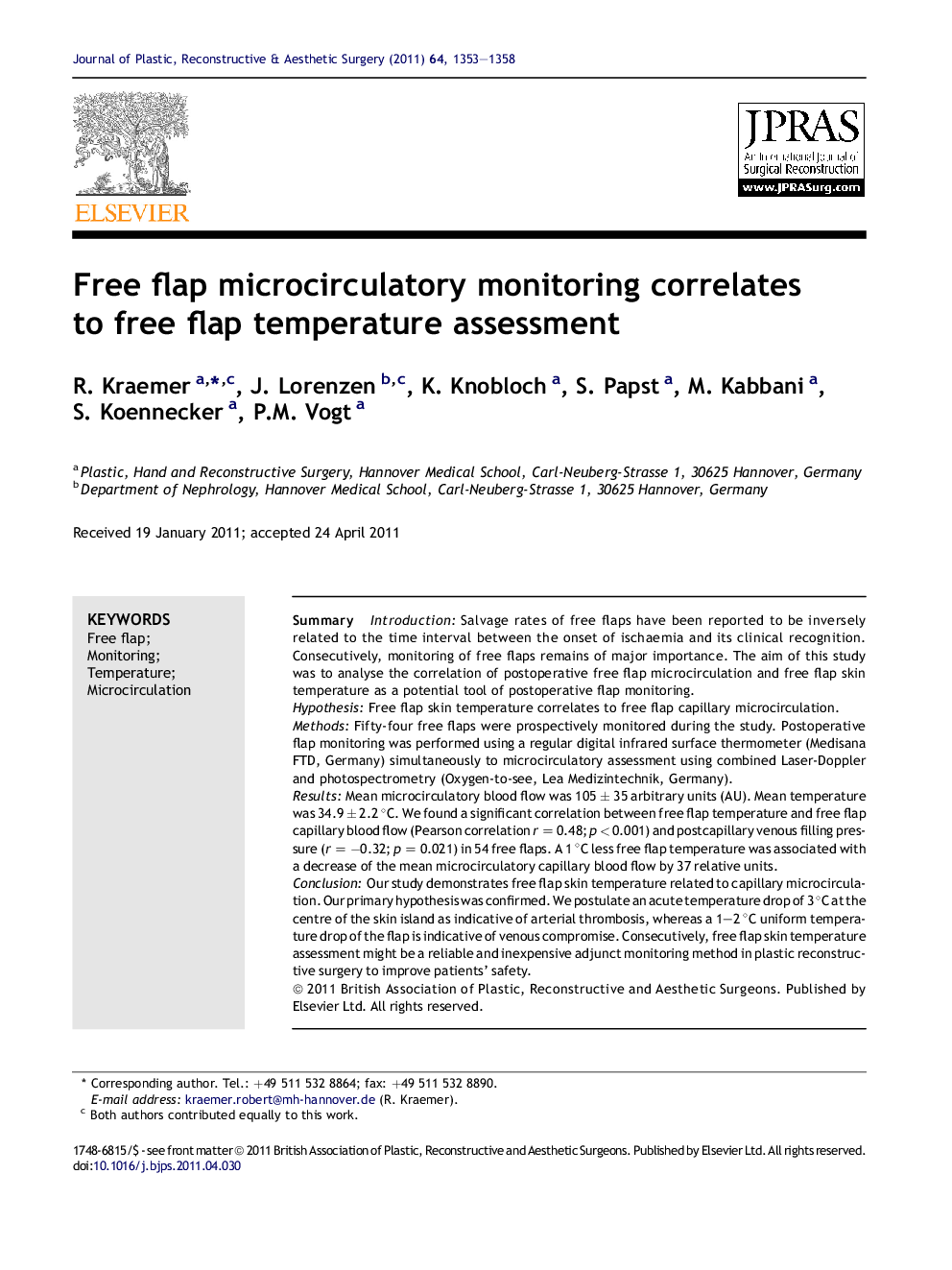| Article ID | Journal | Published Year | Pages | File Type |
|---|---|---|---|---|
| 4120306 | Journal of Plastic, Reconstructive & Aesthetic Surgery | 2011 | 6 Pages |
SummaryIntroductionSalvage rates of free flaps have been reported to be inversely related to the time interval between the onset of ischaemia and its clinical recognition. Consecutively, monitoring of free flaps remains of major importance. The aim of this study was to analyse the correlation of postoperative free flap microcirculation and free flap skin temperature as a potential tool of postoperative flap monitoring.HypothesisFree flap skin temperature correlates to free flap capillary microcirculation.MethodsFifty-four free flaps were prospectively monitored during the study. Postoperative flap monitoring was performed using a regular digital infrared surface thermometer (Medisana FTD, Germany) simultaneously to microcirculatory assessment using combined Laser-Doppler and photospectrometry (Oxygen-to-see, Lea Medizintechnik, Germany).ResultsMean microcirculatory blood flow was 105 ± 35 arbitrary units (AU). Mean temperature was 34.9 ± 2.2 °C. We found a significant correlation between free flap temperature and free flap capillary blood flow (Pearson correlation r = 0.48; p < 0.001) and postcapillary venous filling pressure (r = −0.32; p = 0.021) in 54 free flaps. A 1 °C less free flap temperature was associated with a decrease of the mean microcirculatory capillary blood flow by 37 relative units.ConclusionOur study demonstrates free flap skin temperature related to capillary microcirculation. Our primary hypothesis was confirmed. We postulate an acute temperature drop of 3 °C at the centre of the skin island as indicative of arterial thrombosis, whereas a 1–2 °C uniform temperature drop of the flap is indicative of venous compromise. Consecutively, free flap skin temperature assessment might be a reliable and inexpensive adjunct monitoring method in plastic reconstructive surgery to improve patients’ safety.
